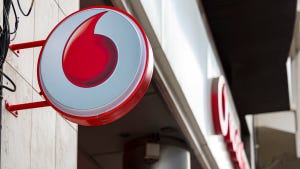The US Department of Defense has teamed with equipment vendors and carriers to assess IPv6 interoperability
October 22, 2003

The American military has taken the first steps toward migrating its network to IPv6. Last week, the U.S. Department of Defense completed the first phase of testing, in what many are calling the largest and most ambitious IPv6 interoperability demonstration ever put together.
In collaboration with the University of New Hampshire InterOperability Laboratory (IOL), the North American IPv6 Task Force, Internet2, and more than 30 networking vendors, testing vendors, and service providers, the DOD assessed the interoperability of standard IPv6-enabled network gear in a nationwide testbed.
Despite the scale of the test, it was designed for the DOD and may have little impact on commercial applications. None of the test results have been published, so nobody really knows the results.
The purpose of this testbed, which is being called Moonv6, is twofold. One goal is to prove that the IPv6 protocol actually works and is ready for real deployment. UNH-IOL has not disclosed specifics of the testing, but test officials claim it went well. The second aim was to provide a large, open network for vendors, service providers, universities, and anyone else interested in testing the IPv6 protocol for real-world functionality.
"This is a public event," says Jim Bound, chair of the North American IPv6 Task Force. "The objective is to keep the network open to anyone who wants to test IPv6."
Organizers say this test is much different from others in the industry. None of the other large-scale tests have tested IPv6 in its native form as extensively as Moonv6, says Bound.
For example, the 6bone network, an informal worldwide collaborative effort, only tests IPv6 tunnels over an existing IPv4 network. The virtual network was set up by folks in the Internet Engineering Task Force (IETF) and consists of many smaller, regional 6bone networks. Parts of the 6bone are starting to run over native IPv6 links, but most of its networks still use IPv6 over IPv4 tunneling/encapsulation.
The Moonv6 testbed was put together after the DOD announced plans to migrate its entire network from IPv4 to IPv6 by 2008 (see IPv6 Coming to America). The department released a mandate in June saying that all of its Global Information Grid assets deployed as of October 1, 2003, must support IPv6.
The initial phase of the Moonv6 testing ran from October 7 to October 17, 2003. The primary IPv6 test event involved approximately 80 servers, switches, and routers configured in dual-stack mode, with IPv4 and native IPv6 running in tandem. Participants ran applications end-to-end to other sites to determine how routers and servers would interact on both local and wide-area networks.
The majority of the testing took place at the UNH-IOL and at Fort Huachuca in Arizona. But the network also includes application servers running at Fort Monmouth in New Jersey; the Space and Naval Warfare (SPAWAR) Systems Centers in Charleston, South Carolina and San Diego, California; the Air Force Communications Command (AFCC) headquarters at Scott Air Force Base in Illinois; and the Marine Corps Network Operations and Security Command (MCNOSC) center in Quantico, Virginia.
Service providers participating in the testing included Chunghwa Telecom Co. Ltd., France Telecom SA (NYSE: FTE), NTT R&D, and Sprint Corp. (NYSE: FON). AT&T Corp. (NYSE: T) will be participating in Phase II of the event.
Testing equipment was provided by Agilent Technologies Inc. (NYSE: A), Ixia (Nasdaq: XXIA), Navtel Communications, and Spirent plc (NYSE: SPM; London: SPT).
Networking equipment included gear from major networking companies, including Cisco Systems Inc. (Nasdaq: CSCO), EMC Corp. (NYSE: EMC), Extreme Networks Inc. (Nasdaq: EXTR), Foundry Networks Inc. (Nasdaq: FDRY), Fujitsu Ltd. (OTC: FJTSY), Hewlett-Packard Co. (NYSE: HPQ), Hitachi Ltd. (NYSE: HIT; Paris: PHA), IBM Corp. (NYSE: IBM), Juniper Networks Inc. (Nasdaq: JNPR), NEC Corp. (Nasdaq: NIPNY), Nokia Corp. (NYSE: NOK), Procket Networks Inc., Microsoft Corp. (Nasdaq: MSFT), and Sun Microsystems Inc. (Nasdaq: SUNW). Vendors were all required to pay a small fee to participate in the testing.
Phase II of the testing will begin in January 2004. Details of the next phase haven't been decided yet, but Major Roswell V. Dixon, director of the Joint Interoperability Test Command for the IPv6 testing, says it will likely test applications running over the network.
IPv6 has already gained significant momentum in Europe and Asia, particularly in Japan, where the government has mandated the use of IPv6 by 2005 (see European IPv6 Plan Comes Under Fire). NTT is already delivering a commercial IPv6 service throughout the Asia/Pacific region, including Japan, Korea, Malaysia, Taiwan, Hong Kong, and Australia, as well as in Europe, including the U.K., the Netherlands, France, Germany, and Spain (see NTT Com Expands IPv6 Coverage).
Some industry analysts, however, say it will be a long time before the new protocol will be used by North American carriers. "There is no market demand or need to switch to IPv6 right now," says Michael Howard, principal analyst at Infonetics Research Inc. "Maybe the government's mandate will be the impetus. But I don't think we’ll see a major shift to IPv6 in the next few years."
— Marguerite Reardon, Senior Editor, Light Reading
You May Also Like









